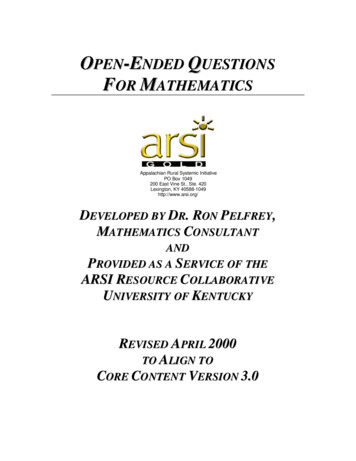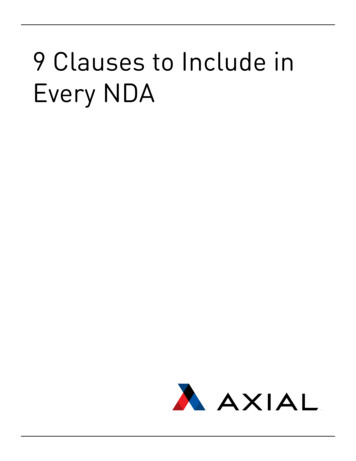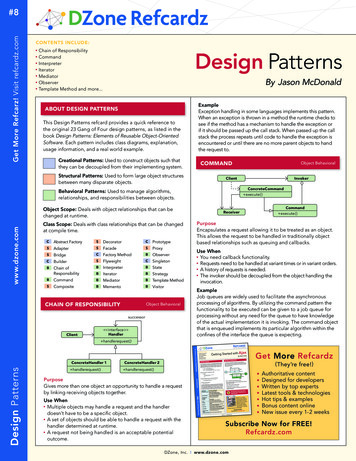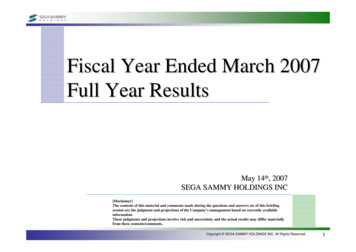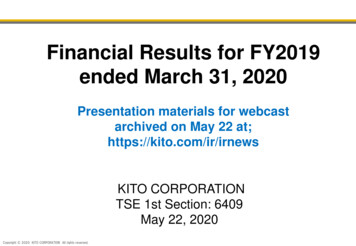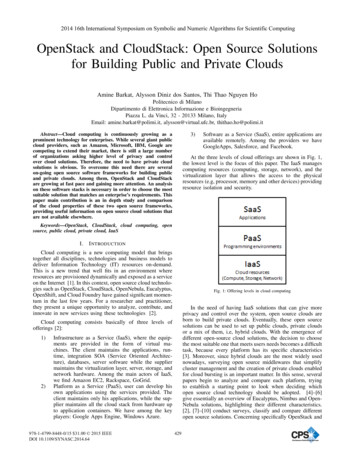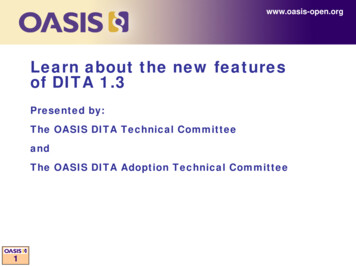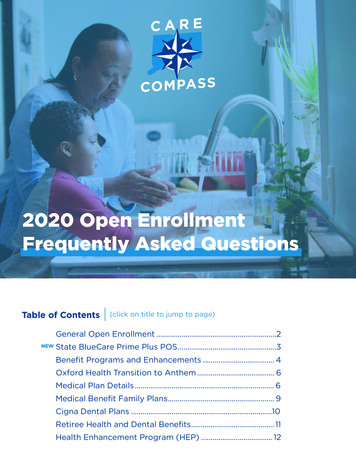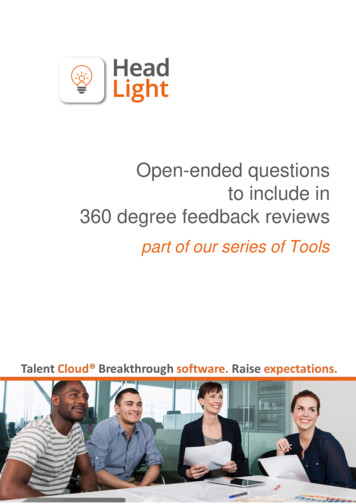
Transcription
Open-ended questionsto include in360 degree feedback reviewspart of our series of Tools
Open-ended questionsContentsChoosing open-ended questions3Suggested questions3Evidence for the ratings . 3Informing development planning. 4When used as part of selection for promotion . 4Next steps5About Head Light5Talent and Talent Cloud are registered trademarks of Head Light Ltd. All other trademarks belong to their respective owners. Head Light Ltd, 20192
Open-ended questionsChoosing open-ended questionsThis guide is aimed at helping those setting up a 360 degree review to select some open-endedquestions, which can be positioned:1. after each question,2. after each competency section,3. at the end of the assessment,or all three if preferred!Consider the following questions before you look at the suggestions which follow: What do you want to get out of the review? For what purpose are you doing it? Is it purely fordevelopment? What’s going to be most helpful to the participants? Think about the sort offeedback you need to get and this should, in part, drive your choice of questions. With whom should you consult when deciding on the questions to ask? Are there people withinthe organisation who would have a valuable viewpoint on this? Are there people you need toengage in order to get buy-in? Do you want to make the open-ended questions optional or mandatory? We can set the systemto require answers if you feel that we should be encouraging participants to support their ratingswith comments, qualitative feedback, examples and evidence. It is worth noting that, in a recentsurvey, 97% of our 360 participants said that the open-ended comments were the mostinteresting and useful aspect of their feedback. Is there anything that isn’t covered in competency model? For instance, do you want to askabout potential, rather than current performance? Do you want to have people provide more detailed explanations of their competency ratings? Ifso, consider providing an option for them to comment after each competency section.Below you will find a number of question options. This is by no means an exhaustive or definitive list,and our online Talent Management system will support any qualitative questions you choose, but theseare some commonly used and insightful examples for your consideration.Suggested questionsEvidence for the ratingsEach competency area (or even each item) can be followed by an open-ended question which willprovide supporting information, explanation, qualification or evidence for the ratings.These can be particularly useful for development planning and feedback purposes, and also if the datais to be aligned and integrated with Development Centre feedback.These questions could be worded as follows: Do you have any comments on the ratings you have provided above? Would you like to provide further information to support the ratings you have given in this area? Can you provide examples of this person’s behaviour or performance that would help them tounderstand their feedback in this area?Talent and Talent Cloud are registered trademarks of Head Light Ltd. All other trademarks belong to their respective owners. Head Light Ltd, 20193
Open-ended questionsInforming development planningAt the end of the 360 assessment, you can include a number of open-ended questions which again areuseful for feedback, development and integration with other data, or for personal development planningas part of a leadership programme.Such questions could be: What would the person need to stop doing in order to be effective as a manager/leader? What would the person need to start doing in order to be effective as a manager/leader? What should the person continue doing in order to be effective as a manager/leader? What should this person do more of? What should this person do less of? What should this person do differently? What is this person’s key strength? What other feedback would you like to provide to this individual? Does the person have any particular strengths that might be overplayed at times? If so, pleasedescribe these and the impact they have when over-used. What do you think are this person’s real talents? What sets this person apart from others (at their level, or in the organisation)? Do you have any further comments that you would like to add? If you could ask this person to do one thing (do more of, or do differently) in order to support youand enable you to do your job to the best of your ability, what would that be? What sets this person apart from others (at their level, or in the organisation)?When used as part of selection for promotionIf you are using 360 for a specific purpose, such as selection for promotion to a higher level role, or tosupport an individual’s learning on a training course or development programme, then consider askingquestions which would directly tie in to the objectives of the programme or the promotion criteria.For example: Is there any other feedback that might help this person in their personal development planning? Where should this individual focus their personal development efforts in the next one to two years? What would the individual need to develop further in order to operate even more effectively as asenior manager or leader? Overall, how well does this person demonstrate the behaviours, skills and attitudes which arenecessary to be effective at senior levels? To what extent does this person demonstrate potential for a more senior management role? What advice would you give to help them maximise their potential for a senior management role? What impact does this person have on you and your work? Is there anything in this person’s style or approach that, in your opinion, stops them from being aseffective as they could be?Talent and Talent Cloud are registered trademarks of Head Light Ltd. All other trademarks belong to their respective owners. Head Light Ltd, 20194
Open-ended questionsNext stepsIf you would like to take a closer look at developing your Talent Management Strategy, please get intouch.About Head LightHead Light is an award-winning talent management software and consulting firm that works with clientsto define and implement impactful talent management strategies.Talent Cloud is our cloud-based portfolio of integrated talent management software tools designed forthose who expect the maximum return from talent management processes. Our training and consultingservices uniquely complement our breakthrough software that engages employees, managers andsenior leaders in the selection, development and progression of people in their businesses.Companies in the FTSE 350, public sector, large and small, from retailers to high tech innovatorshave all benefitted from our tools, techniques and expertise. Founded in 2004, we are headquarteredin the UK.Head Light has attained the ISO27001 standard for Information Security.Certificate No 217613.Talent and Talent Cloud are registered trademarks of Head Light Ltd. All other trademarks belong to their respective owners. Head Light Ltd, 20195
How do I transition to Continuous Performance ManagementHow do I introduce robust Succession PlanningHow do I.spot High Potentials and Future LeadersHow do I drive Engagement through Career Conversations and DevelopmentHow do I embed new values and improve cultureHow do I conduct Skills Assessments and a Gap AnalysisE: info.request@head-light.co.ukW: www.head-light.co.uk
This guide is aimed at helping those setting up a 360 degree review to select some open-ended questions, which can be positioned: 1. after each question, 2. after each competency section, 3. at the end of the assessment, or all three if preferred! Consider the following questions before you look at the suggestions which follow:File Size: 298KBPage Count: 6
